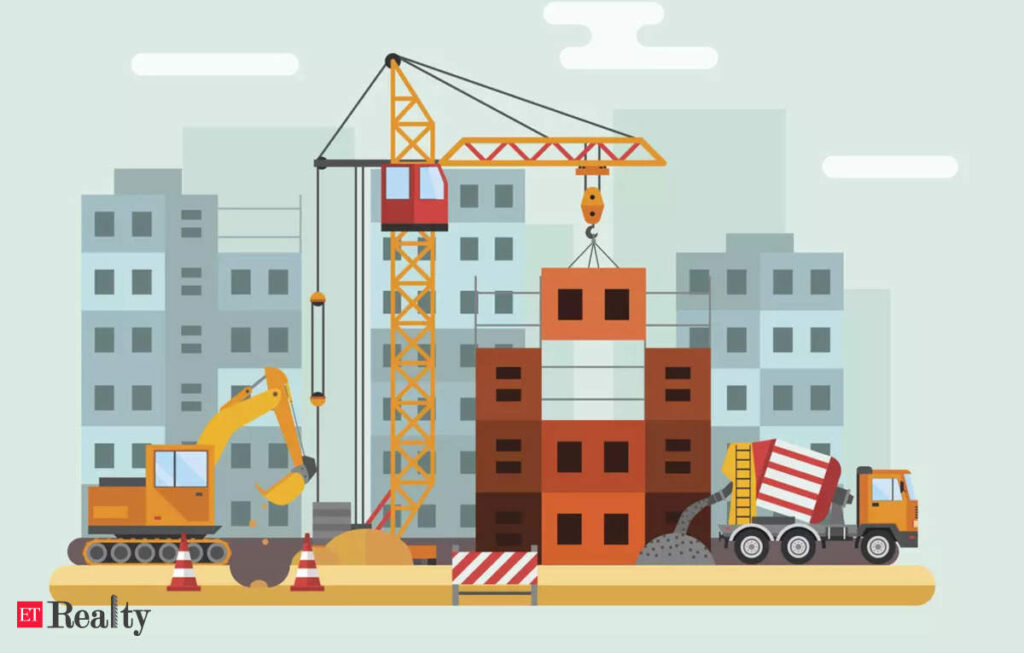
Image Source: FreeImages
Introduction
As the world continues to evolve, so do the needs and expectations of senior citizens. Gone are the days of traditional nursing homes; today’s seniors are looking for vibrant communities that offer a wide range of amenities and activities. In this article, we explore the evolution of senior living communities and how they are adapting to changing demographics.
With advancements in healthcare and longer life expectancies, the senior living industry has undergone a transformation in recent years. Seniors are seeking communities that provide not just care, but also opportunities for active and purposeful living. From fitness centers and art studios to gourmet dining options and organized social events, these communities cater to the desires of today’s seniors.
Moreover, as demographics change, senior living communities are becoming more diverse and inclusive. They are embracing various cultures, religions, and lifestyles to create an environment that celebrates individuality and fosters a sense of belonging for all residents.
Join us as we delve deeper into the modern-day senior living communities and discover how they are shaping a new era of aging.
The Changing Demographics of Senior Living
The demographics of senior living communities have shifted significantly over the years. With the baby boomer generation entering their golden years, the demand for senior living options has increased dramatically. These individuals grew up during a time of social change and are not willing to settle for traditional nursing homes. They want communities that offer a sense of purpose, engagement, and independence.
Moreover, the population of seniors from diverse backgrounds is also growing. With increasing cultural and ethnic diversity, senior living communities are adapting to provide culturally sensitive care and amenities. From specialized dining options to multilingual staff, these communities are embracing diversity to ensure all residents feel valued and included.
The changing demographics have also led to a rise in the number of LGBTQ+-friendly senior living communities. These communities are designed to provide a safe and accepting environment for LGBTQ+ seniors, where they can age without fear of discrimination or prejudice.
As the demographics continue to evolve, senior living communities must adapt to meet the unique needs and expectations of the residents they serve.
Factors Driving the Evolution of Senior Living Communities
Several key factors are driving the evolution of senior living communities. One of the primary drivers is the desire for active and purposeful living. Today’s seniors want to maintain an active lifestyle and engage in meaningful activities that contribute to their overall well-being. As a result, senior living communities are investing in amenities and programs that support an active and purposeful lifestyle.
Another factor is the focus on holistic care. Seniors are not just looking for medical care; they want comprehensive support for their physical, emotional, and social well-being. This includes access to healthcare professionals, mental health services, and social activities that promote socialization and connection.
Furthermore, the increasing emphasis on independence is shaping the evolution of senior living communities. Seniors want to maintain their autonomy and make their own choices. This has led to the rise of independent living options within senior communities, where residents can enjoy their own private living spaces while still having access to support and care when needed.
The evolving needs and expectations of seniors, along with societal changes, have paved the way for the transformation of senior living communities.
The Rise of Active Adult Communities
Active adult communities have gained popularity in recent years as seniors seek out vibrant and engaging environments. These communities are designed for individuals aged 55 and older who are looking for an active and socially fulfilling lifestyle. They offer amenities such as golf courses, fitness centers, swimming pools, and organized activities to promote an active and healthy lifestyle.
Active adult communities provide a sense of community and belonging, where residents can form friendships and engage in shared interests. These communities often have clubs and social groups centered around hobbies, sports, and arts to foster social connections and a sense of belonging.
Moreover, active adult communities recognize the importance of lifelong learning and personal growth. They often offer educational programs and workshops to stimulate the mind and encourage continual learning and development.
The rise of active adult communities is a testament to the changing expectations of seniors who want to live life to the fullest and embrace new experiences.
The Importance of Amenities and Services in Modern Senior Living Communities
Amenities and services play a crucial role in modern senior living communities. These communities understand the importance of providing a wide range of amenities that cater to the diverse interests and preferences of their residents.
Fitness centers and wellness programs are essential components of senior living communities. Seniors are increasingly focused on maintaining their physical health and well-being, and having access to fitness facilities and programs allows them to do so conveniently. From yoga classes to strength training, these communities offer a variety of exercise options to accommodate different fitness levels and interests.
Dining options have also evolved in senior living communities. Gourmet dining experiences, with a focus on nutritious and delicious meals, are now the norm. These communities often have multiple dining venues, including casual cafes and formal restaurants, where residents can enjoy meals prepared by professional chefs.
In addition to physical amenities, senior living communities also provide a range of services to support the well-being of their residents. This includes housekeeping, transportation services, and assistance with activities of daily living. By offering these services, senior living communities aim to enhance the quality of life for their residents and alleviate the burdens associated with daily tasks.
The emphasis on amenities and services is a response to the changing expectations of seniors who want to live in communities that offer a high standard of living and cater to their individual needs and preferences.
Technology and Innovation in Senior Living Communities
Technology and innovation are transforming the senior living industry. From advanced healthcare monitoring systems to smart home technology, seniors are benefiting from technological advancements that enhance their safety, comfort, and overall well-being.
One area where technology has made a significant impact is in healthcare. Senior living communities are adopting electronic health records, telemedicine, and wearable devices to monitor residents’ health and provide timely medical interventions. These advancements enable proactive healthcare management and early detection of potential health issues, leading to better outcomes for seniors.
Smart home technology is also gaining traction in senior living communities. Voice-activated assistants, automated lighting, and temperature control systems make it easier for seniors to navigate their living spaces and maintain independence. These technologies provide convenience and peace of mind, allowing seniors to age in place more comfortably.
Furthermore, technology is being utilized to enhance socialization and connection among residents. Virtual reality experiences, social media platforms, and online communities enable seniors to connect with others, engage in shared interests, and combat feelings of isolation.
As technology continues to advance, senior living communities will embrace innovative solutions that enhance the lives of their residents and provide a greater level of safety, convenience, and engagement.
Design Trends in Senior Living Communities
Design plays a vital role in creating senior living communities that are visually appealing, functional, and conducive to a high quality of life. Today’s design trends focus on creating spaces that promote wellness, comfort, and engagement.
Open floor plans and ample natural light are prevalent design features in modern senior living communities. These elements create a sense of spaciousness and enhance the overall ambiance of the living spaces. Access to natural light has been shown to improve mood and well-being, making it an essential consideration in design.
Additionally, senior living communities are incorporating nature-inspired elements into their design. Outdoor gardens, walking trails, and courtyards provide residents with opportunities to connect with nature and enjoy the outdoors. These spaces also serve as gathering areas for socialization and relaxation.
Universal design principles are also becoming more prevalent in senior living communities. These design principles focus on creating spaces that are accessible to individuals of all ages and abilities. Features such as wider doorways, step-free entrances, and grab bars in bathrooms ensure that residents can navigate their living spaces safely and comfortably.
The design trends in senior living communities reflect the desire to create environments that are aesthetically pleasing, functional, and supportive of the residents’ overall well-being.
The Role of Healthcare in Senior Living Communities
Healthcare plays a crucial role in senior living communities, ensuring that residents receive the care and support they need to maintain their health and well-being.
On-site healthcare professionals, including doctors, nurses, and therapists, are essential components of senior living communities. They provide medical care, monitor residents’ health, and coordinate with external healthcare providers when necessary. Having healthcare professionals readily available in the community ensures that residents receive timely and appropriate care.
Preventive care is also a focus in senior living communities. Regular health screenings, wellness programs, and educational workshops promote proactive health management and early detection of potential health issues. By prioritizing preventive care, senior living communities aim to empower residents to take control of their health and age well.
Additionally, senior living communities often have partnerships with local healthcare providers and hospitals, ensuring that residents have access to specialized care and services when needed. These collaborations enable seamless coordination of care and ensure that residents receive the appropriate level of medical attention.
The role of healthcare in senior living communities is to provide comprehensive support for the physical, emotional, and mental well-being of residents, allowing them to age with dignity and a high quality of life.
Marketing and Branding Strategies for Senior Living Communities
Marketing and branding are crucial aspects of senior living communities, as they help attract potential residents and convey the unique value proposition of the community.
One effective marketing strategy is to showcase the lifestyle and amenities offered by the community. This can be done through high-quality photography and videos that highlight the vibrant social scene, engaging activities, and beautiful living spaces. By showcasing the lifestyle, potential residents can envision themselves living in the community and participating in the activities that interest them.
Testimonials and success stories from current residents are also powerful marketing tools. These stories provide social proof and demonstrate the positive impact the community has had on residents’ lives.
Moreover, digital marketing strategies such as search engine optimization (SEO), social media marketing, and targeted online advertising can help reach a wider audience and generate leads. By utilizing these strategies, senior living communities can connect with individuals who are actively searching for senior living options and create awareness about their community.
Branding is also essential in positioning a senior living community as a trusted and desirable option. Developing a strong brand identity, including a compelling logo, consistent visual elements, and a clear brand message, helps differentiate the community from competitors and build trust with potential residents and their families.
By implementing effective marketing and branding strategies, senior living communities can attract and retain residents, ultimately contributing to the success and sustainability of the community.
Conclusion: Embracing the Future of Senior Living
The evolution of senior living communities reflects the changing needs and expectations of today’s seniors. These communities are adapting to provide vibrant and engaging environments that promote active and purposeful living. From amenities and services to technology and design, senior living communities are continuously evolving to meet the diverse needs of their residents.
As demographics change, senior living communities are becoming more inclusive, embracing diversity, and celebrating individuality. They are creating spaces that foster a sense of belonging and ensure that all residents feel valued and respected.
The future of senior living is bright, with continued advancements in healthcare, technology, and design. Senior living communities will continue to evolve, providing innovative solutions that enhance the lives of their residents and redefine the aging experience.
By embracing the future of senior living, we can create communities that empower seniors to age with dignity, purpose, and a strong sense of community.









